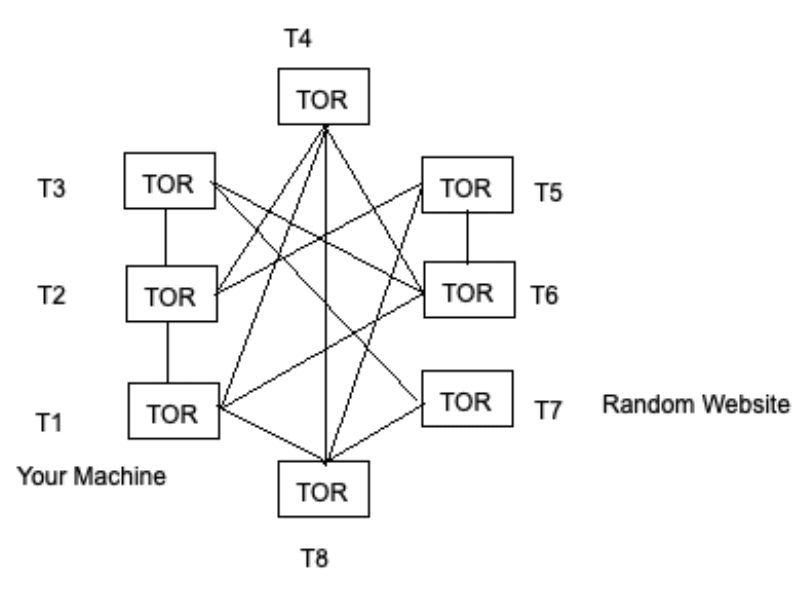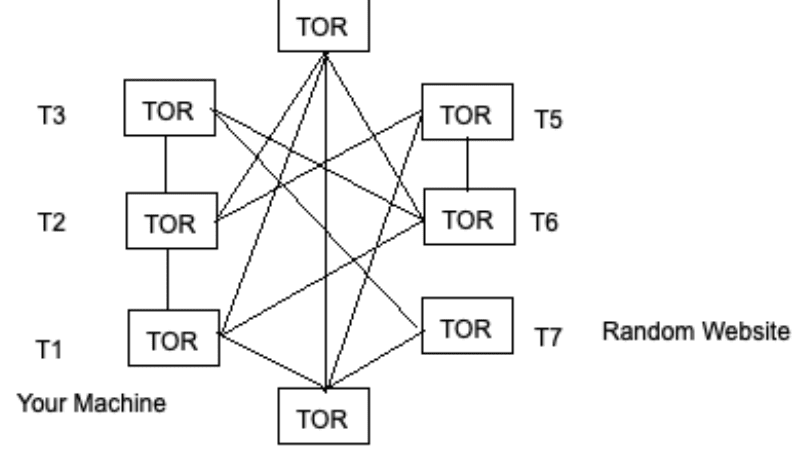This is Part 2 of our 3-part series on demystifying the dark web.
In Part 1, we looked at how the regular internet works at a networking layer. Today, we will be looking at how the dark web works at a networking layer. Again, this will be a very basic example to get the general structure in place.
The same disclaimer applies as before: for the sake of simplicity and ease of understanding, I will be speaking in easy to understand terminology, so take what I say with a grain of salt as it can get a lot more complicated and detailed. But we will be looking at it from a high overview.

Let’s try to wrap our heads around what we see. Looking at how the nodes are connected, we will fill out a graph with the first column being the node we are at, and the second column being the nodes it is connected to.

All of these nodes have corresponding external IP addresses. The fun part of the dark web (tor) is that each tor node is connected to other tor nodes, but not necessarily all other tor nodes. So in this example, we see that we are the node [T1], and the same website we wanted to get to before is the node [t7]. We can’t just go to a browser and say connect me to t7, because on the dark web, we have no idea of what a domain name is. We can’t go to DuckDuckGo.com, we have to go to http://3g2upl4pq6kufc4m.onion/ on a tor browser. So now we get to traverse the tor network.
Again, our mission is to get from [t1] to [t7]. We start up by hopping to either [t3] or [t8]. The tor browser will decide which one it wants us to go to–hopefully we get the faster node. Now we are only one hop away from our destination. Let’s say we hopped to [t3]. We now hop to [t7] our final destination.
The anonymity behind tor comes from the minimal information passed between the hops. In this example, the website we wanted to get to, [t7], knows that node [t3] connected to it, but it has no clue if [t3] was the true origin or if someone was connecting through [t3]. In this example, we are actually [t1], but [t7] has no idea of who we are because of the power of the dark web.
I hope this very small example helps you to wrap your head around how the dark web [tor] works. In reality, it is a massive network of billions of nodes, and visiting a single website may route you through hundreds and hundreds of nodes. One thing to also keep track of is that once you are gaining the benefits of the dark web [tor], you are now also a node other nodes can route through.
Stay tuned for part 3, where we talk about why websites can hide so easily on it, and why not everything on the dark web is bad.

